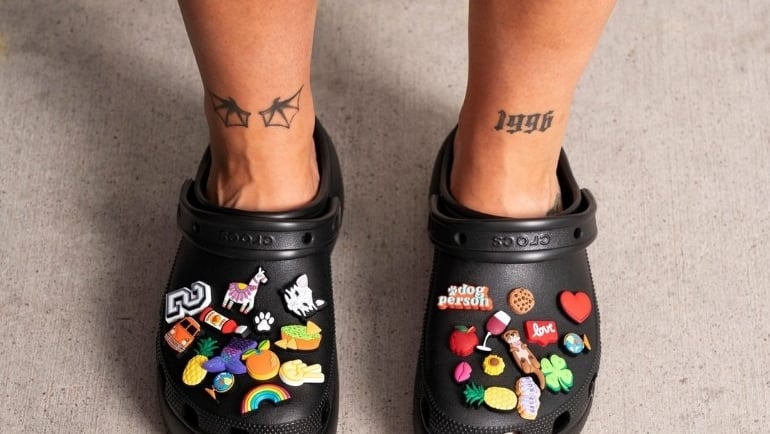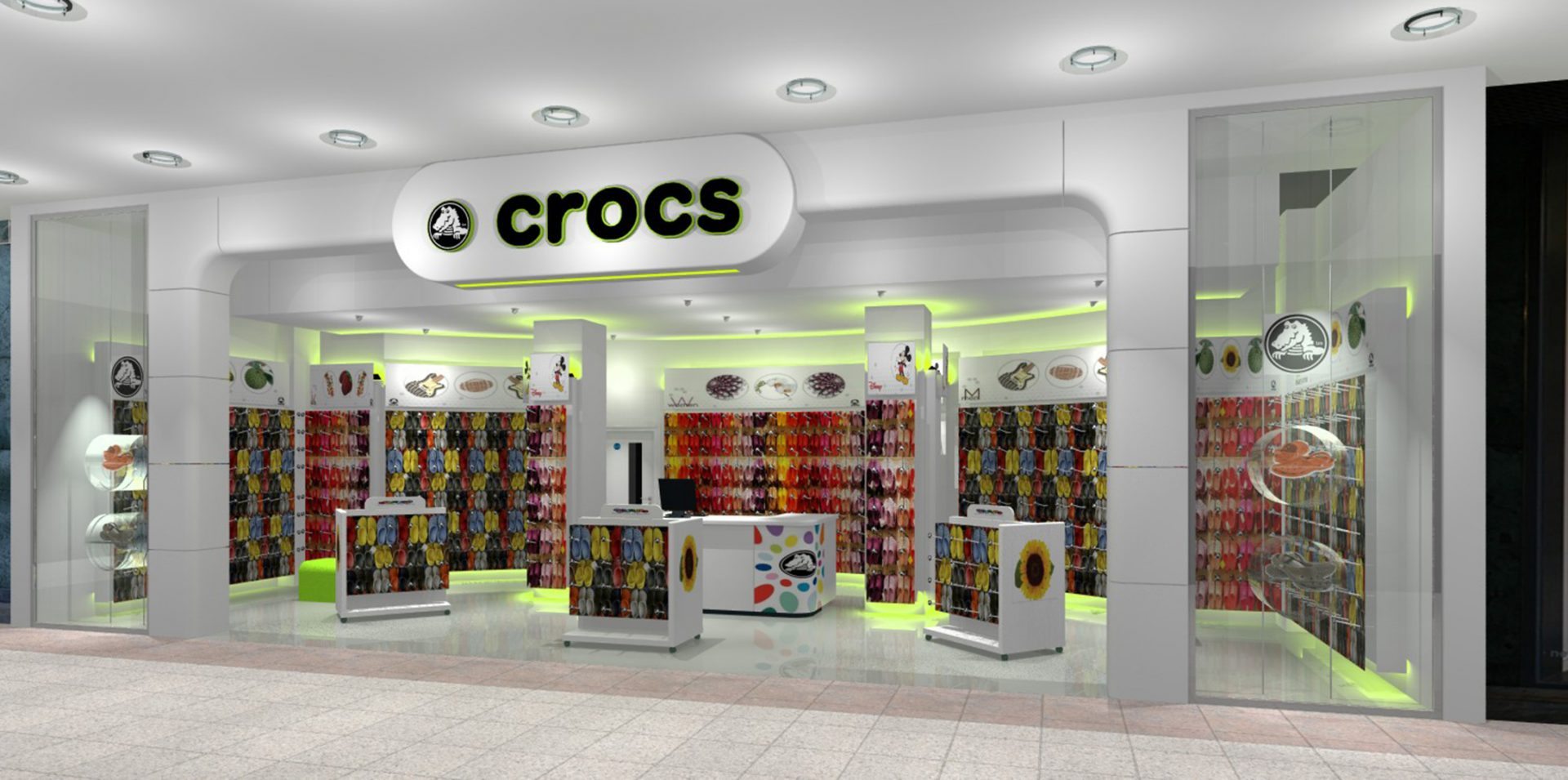👟 Welcome to Crocsy Vibe – Where Comfort Meets Global Style! 🌈
Crocs vs. Other Footwear Brands in 2025: Who Wins in Comfort, Style & Value?
SHARAD RAJGURU
7/18/20259 min read


Introduction: The Battle of the Footwear Giants
The footwear market in 2025 presents a vibrant and competitive landscape, characterized by an array of brands striving to meet diverse consumer needs. One brand that has notably shifted from niche comfort to a global icon is Crocs. Known for its distinctive foam clogs, Crocs has harnessed consumer insights to establish itself not only as a comfortable alternative but also as a stylish choice suitable for various occasions. This transformation highlights the evolving nature of consumer preferences, with comfort, price, durability, design, versatility, and trend value becoming crucial factors in the decision-making process.
In recent years, consumers have increasingly prioritized comfort alongside style, leading many traditional footwear brands to reevaluate their offerings. Companies like Nike, Adidas, Puma, Bata, and Skechers have adopted innovative approaches to footwear design and marketing to remain competitive in this dynamic environment. Each of these brands brings unique strengths to the table, with Nike and Adidas focusing on cutting-edge technology and performance, while brands like Skechers and Bata aim to strike a balance between affordability and comfort.
This blog post will provide a thorough comparison of Crocs with these leading brands, examining key elements such as user comfort, aesthetic appeal, and overall value for money. As the landscape of footwear continues to evolve, discerning buyers are more inclined than ever to assess various attributes before committing to a purchase. From athletic styles to casual everyday shoes, the competition among these footwear giants encompasses a wide array of styles and prices, ensuring that consumers have a wealth of options at their disposal.
Comfort: The Ultimate Game-Changer
In the rapidly evolving footwear industry, comfort has emerged as the leading factor influencing consumer purchasing behavior. As more individuals prioritize comfort alongside style, brands are compelled to innovate their offerings to cater to this demand. Crocs, in particular, has made a significant mark with its distinctive design, prioritizing lightweight construction, exceptional cushioning, and remarkable arch support.
The lightweight nature of Crocs allows wearers to enjoy a sense of freedom, which is particularly beneficial for those who engage in prolonged periods of walking or standing. This characteristic not only enhances wearability but also reduces foot fatigue, making Crocs a preferred option for professionals in demanding environments, such as healthcare and hospitality. Furthermore, the foam footbed used in many Crocs models provides remarkable cushioning, ensuring that each step is soft and supportive.
In contrast, other brands have adopted various approaches to enhance comfort in their footwear lines. Notable competitors, such as Skechers and Nike, emphasize innovative materials and technologies. For example, Skechers incorporates their proprietary Air-Cooled Memory Foam, designed to adapt to foot contours, while Nike integrates responsive cushioning technologies aimed at reducing impact during movement.
User testimonials often underscore the unparalleled comfort of Crocs, with many loyal customers attesting to their effectiveness in providing all-day wearability. According to a recent survey, over 80% of Crocs users reported satisfaction with the level of comfort, praising the arch support and overall ease of wearing. Expert opinions further support these findings, as industry professionals increasingly recognize comfort as a crucial factor in footwear choices.
According to foot health studies, the benefits of selecting comfortable footwear extend beyond immediate relief and can lead to long-term health advantages, such as improved posture and reduced risk of foot-related ailments. With both Crocs and other leading brands adapting to these trends, consumers are presented with a broader selection of comfortable choices, each seeking to dominate the market on its own terms.
Price: Evaluating Affordability and Value
In the competitive landscape of footwear brands in 2025, price remains a critical consideration for consumers looking to balance affordability with quality. Crocs, known for their distinctive design and comfort, typically fall within a mid-range price category compared to established brands like Nike and Adidas. The average cost of Crocs varies based on the type and collection, with classic clogs retailing between $40 and $60 while limited edition or collaboration models may reach upwards of $80. This pricing strategy places them in direct competition with other casual footwear but emphasizes a value proposition centered on comfort and longevity.
When analyzing cost-effectiveness, it is crucial to consider the longevity of the footwear. Crocs are engineered from durable materials, designed to withstand frequent wear while maintaining their comfort, making them an appealing choice for consumers who prioritize durability as a part of their investment. In contrast, athletic brands such as Nike and Adidas often market their products at higher price points, with running shoes ranging from $80 to $200. This discrepancy in pricing is often justified by technological innovations and brand prestige, which some consumers are willing to pay a premium for.
Moreover, customer perceptions of value significantly influence their purchasing decisions. Many Crocs users highlight the practical advantages of the footwear, noting that they typically provide better comfort for extended periods compared to more traditional styles, ultimately leading to a favorable cost-to-benefit ratio. Promotions and sales trends also play a role in shaping these perceptions, as seasonal discounts and partnerships can drive down the price of Crocs, making them even more accessible. In a market saturated with options, consumers evaluation of footwear encompasses not only the initial purchase price but the overall satisfaction and performance over time, leading to a nuanced comparison between Crocs and other leading brands.
Durability: Footwear That Lasts
Durability is a crucial factor when evaluating footwear brands, especially in a landscape where consumers expect value for their investment. Crocs have established a reputation for longevity, primarily due to their unique construction and the materials used in creating their iconic clogs and shoes. Made from Croslite, a patented closed-cell resin, Crocs exhibit excellent wear resistance and are known to withstand the rigors of daily use without significant degradation. This material also provides a lightweight feel, enhancing comfort without compromising on durability.
In contrast, many competing footwear brands utilize various synthetic materials and traditional leathers that can vary more significantly in durability. While high-quality leather can offer exceptional durability, it often requires more maintenance to uphold its appearance and functionality over time. Consumer reviews frequently highlight that Crocs maintain their structural integrity, emphasizing that even with regular wear, they show minimal signs of wear and tear. This has contributed to Crocs' overall customer satisfaction ratings, which speak to the confidence consumers have in the longevity of the product.
When considering warranty policies, Crocs provide a transparent approach that reinforces their commitment to durability. Although specific warranty details can vary, many consumers report positive experiences regarding returns or exchanges, suggesting that the company stands behind its products. In contrast, other footwear brands often have more restrictive warranties and can take longer to process claims, which may leave consumers feeling less secure about their purchases.
In summary, while there are other brands that offer competitive durability, Crocs tend to excel in combining long-lasting materials with solid construction quality. This results in footwear that not only withstands everyday challenges but also retains customer loyalty through positive experiences related to their durability.
Design: Aesthetic Appeal and Innovation
The design of footwear plays a crucial role in consumer choices, particularly in a market where comfort, style, and value are paramount. Crocs has established itself as a pioneer in the footwear industry with its distinctive aesthetic appeal. Beginning with the classic clog design, Crocs has expanded its portfolio over the years to include various styles, colors, and patterns. These adaptations cater to a broad audience, allowing wearers to express their individuality through playful colors and unique prints.
Innovation has been at the forefront of Crocs’ design philosophy. Notable collaborations with high-profile fashion brands and designers have introduced limited-edition releases that not only uphold the brand's signature comfort but also enhance its status within the fashion community. These partnerships have encouraged consumers to view Crocs not just as comfortable footwear but also as a fashion statement, merging functionality with trendy aesthetics.
In contrast, various other footwear brands have made strides in their design approaches as well. Many have adopted bold styles, experimenting with intricate patterns and vibrant colors while focusing on aligning their offerings with current fashion trends. Some brands have opted for minimalist designs, emphasizing sleek silhouettes and understated elegance. This contrast showcases a significant evolution in the industry, where consumer preferences increasingly favor expressive design yet remain mindful of comfort.
Moreover, the ongoing debate about style versus functionality remains relevant as consumers evaluate their needs and desires. While some prioritize aesthetic appeal, others lean heavily toward comfort and practicality. Understanding this dichotomy is vital as brands like Crocs and their competitors seek to navigate consumer preferences in a rapidly evolving marketplace.
Versatility: Footwear for Every Occasion
When assessing the versatility of footwear brands in 2025, Crocs emerge as a notable competitor. Renowned for their lightweight and easy-to-clean design, Crocs can be seamlessly transitioned from casual outings in urban environments to more rugged outdoor adventures. Their unique construction allows them to function well in various settings, whether it involves gathering with friends at a backyard barbeque, engaging in outdoor festivals, or taking a leisurely stroll along the beach. The adaptability of Crocs is largely credited to their extensive range of styles, which includes everything from classic clogs to sandals, making them suitable for an array of occasions.
In comparison, other footwear brands also showcase a commitment to versatility, catering to diverse consumer needs. For instance, brands like Skechers and Nike have crafted options that blend comfort with aesthetic appeal, offering sneakers that are appropriate for workouts yet stylish enough for casual gatherings. These brands often incorporate technologies that enhance performance without sacrificing comfort, making them well-suited for individuals engaged in a variety of activities throughout the day.
Moreover, the rise of fashion-forward designs within Crocs, such as collaborations with high-end designers, demonstrates an effort to position their products as more than just functional footwear. This strategy allows Crocs to tap into the fashion market while maintaining their reputation for comfort. Competing brands are also rising to this challenge, introducing lines that prioritize both practicality and visual appeal. For instance, Adidas has ventured into slip-on styles reminiscent of traditional clogs, emphasizing ease of wear while promoting their own unique branding.
Overall, when looking at versatility, Crocs certainly hold their ground against other footwear brands. Their ability to adapt to various environments and occasions illustrates their strength as a multifunctional option in consumers' wardrobes. However, competition remains fierce, with several brands continually innovating to meet the diverse demands of today's buyers.
Trend Value: Staying Relevant in a Changing Market
As 2025 unfolds, the footwear market continues to navigate rapid shifts in consumer preferences, driven by an increasing emphasis on comfort, individuality, and sustainability. Crocs has successfully captured the essence of adaptability through several marketing strategies that position the brand as a frontrunner in the industry. By leveraging celebrity endorsements and maintaining a robust social media presence, Crocs has ensured its relevance amidst fierce competition. The brand's collaborations with notable figures from various fields, such as music, fashion, and sports, have enhanced its visibility and appeal, effectively bridging the gap between comfort and style.
In contrast to other footwear brands, Crocs has adeptly embraced a strategy focused on trending aesthetics while prioritizing comfort. Many traditional brands struggle to adapt swiftly to evolving fashion trends, often remaining static in their offerings. However, Crocs’ unique ability to innovate with style variations and limited edition releases has made it a staple within contemporary fashion, particularly amongst younger generations. The colorful designs and customizable options of Crocs resonate well with the current trend of self-expression through personal style, appealing to consumers who value not just footwear functionality but the ability to showcase their individuality.
Moreover, social media plays a crucial role in shaping customer perceptions and preferences. The viral nature of platforms such as Instagram and TikTok has allowed Crocs to engage with consumers in real-time, making direct connections that traditional marketing methods may not achieve. This potent presence on social media significantly influences shopping behaviors, especially among millennials and Gen Z, driving demand for Crocs and amplifying its reach beyond mere utility footwear.
In conclusion, Crocs has managed to maintain its relevance in a fast-paced, trend-driven market through innovative marketing strategies and a keen understanding of evolving customer preferences. By leveraging celebrity influence and social media engagement, Crocs has undoubtedly positioned itself as a pivotal player in the contemporary footwear landscape, setting a benchmark for other brands in adaptability and trend value.
Conclusion: Who Comes Out on Top?
After a thorough examination of Crocs and other prominent footwear brands in 2025, it is evident that the competition remains fierce, particularly in areas such as comfort, style, and overall value. Crocs stands out for its exceptional comfort and lightweight materials, making it a favorite among consumers seeking practicality and ease of wear. The brand’s unique design has also garnered a significant following, contributing to its trend value.
However, while Crocs excels in comfort, several competitors offer stronger performance in different aspects. For instance, brands like Nike and Adidas have managed to blend style with performance, appealing to fashion-conscious consumers who prioritize athletic functionality. These brands also emphasize durability and contemporary designs, catering to a diverse range of preferences within the market.
In terms of price, Crocs offers an accessible option for consumers, which can be viewed as a significant advantage in the competitive landscape of footwear. Yet, other brands have adapted pricing strategies, providing higher-end models that justify their costs through innovative technologies and eco-friendly practices, thus positioning themselves as value-driven choices in a saturated market.
As we move forward, the future of the footwear industry appears to be leaning towards personalization and sustainability. Brands that can respond to consumer demands for eco-conscious products and customizable options are likely to thrive. While Crocs may maintain its stronghold on comfort, other brands are swiftly adapting and evolving, thereby redefining what value means in 2025.
Ultimately, determining the "winner" will depend largely on individual consumer priorities. Whether one prioritizes comfort, style, or price, each brand has its merits, making the choice ultimately subjective and varied by personal preference.

Get in touch
Address
3721 Single Street
Quincy, MA 02169
Contacts
123-456-7890
info@email.com
